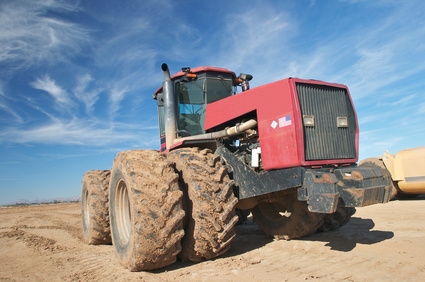
There are numerous industries that rely on using heavy off-road equipment to complete specific jobs. The industries include construction, agriculture and transportation of heavy materials. Although moving heavy machinery and equipment is necessary, it can be hazardous for citizens driving on regular roads. Also, the frequent use of heavy equipment can cause damage to the road itself.
The Occupational Safety and Health Administration website clearly explains the requirements for heavy off-road construction equipment that is going to be driven across a roadway. All of the vehicles must be approved by the American National Standard for Powered Industrial Trucks. A sticker verifying proof of approval must be visible on the equipment. All of the vehicles must possess safeguards for the electrical systems to prevent fires. Prior to moving any heavy construction equipment the brakes, lights, horns and emergency signal must all be in working order. The transportation should be conducted in a timely manner at a safe speed to minimize stress on the road.
The National Ag Safety Database website states the requirements and safety procedures that must be followed when heavy agricultural equipment is being moved on public roads. The connection of the hitch and safety pin should be checked before moving the equipment. Proper lighting and flashing warning lights should be turned on to alert motorists. The tires and brakes should be checked before accessing a public road. All regular traffic laws must be obeyed and extra precautions should be taken -- such as reducing the speed of the equipment to ensure safety.
According to the Occupational Safety and Health Administration, material handling equipment includes scrapers, loaders, crawler or wheel tractors, bulldozers, off-highway trucks, graders and agricultural and industrial tractors. Seat belts must be installed and used when operating and moving material handling equipment. All roads must be researched ahead of time to ensure that the surface is strong enough to safely support the equipment. The equipment must have working brakes, a correct fender and a roll cage. Also, a horn must be in working condition on any material handling equipment. Any objects that could potentially fall or become separated from the equipment must be attached securely.